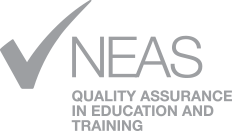In this module, we’ve seen how constructive alignment connects learning outcomes, assessments, and teaching activities into a single coherent framework.
Key points to remember:
- Learning outcomes should be clear, measurable, and aligned to Bloom’s Taxonomy.
- Assessments and rubrics must be directly linked to those outcomes.
- Rubrics work best when they use simple language, clear criteria, defined scales, and precise performance descriptors.
When these elements align, assessments become transparent, fair, and consistent—helping both teachers and students achieve success.
Further Resources
If you’d like to explore learning outcomes and rubrics in more depth—especially for ESL/EFL teaching—here are some useful places to start:
- Bloom’s Taxonomy (Anderson & Krathwohl, 2001) – for guidance on choosing measurable verbs and matching outcomes to cognitive levels.
- TESOL International Association – practical resources and professional development on assessment and curriculum design.
- Cambridge English Resources for Teachers – guides and sample rubrics tailored to language teaching contexts.
- Brown, H. D., & Abeywickrama, P. (2019). Language Assessment: Principles and Classroom Practices – a standard text on assessment in ESL/EFL contexts.
These resources provide both the theory and practical examples you can adapt to your own classroom
If you are looking for more videos on this topic, try the video below.
References for this module
- Anderson, L. W., & Krathwohl, D. R. (Eds.). (2001). A taxonomy for learning, teaching, and assessing: A revision of Bloom’s taxonomy of educational objectives. Longman.
- Biggs, J., & Tang, C. (2011). Teaching for quality learning at university (4th ed.). McGraw-Hill Education.
- Brookhart, S. M. (2013). How to create and use rubrics for formative assessment and grading. ASCD.
- Center for Excellence in Learning and Teaching. (n.d.). Writing learning outcomes. Iowa State University. https://www.celt.iastate.edu/teaching/learning-outcomes/
- Panadero, E., & Jonsson, A. (2020). Using formative assessment to enhance learning, achievement, and academic self-regulation. In J. H. McMillan (Ed.), SAGE handbook of research on classroom assessment (pp. 276–293). SAGE Publications.
- Quality Assurance Agency for Higher Education (QAA). (2023). Guidance on assessment. https://www.qaa.ac.uk
